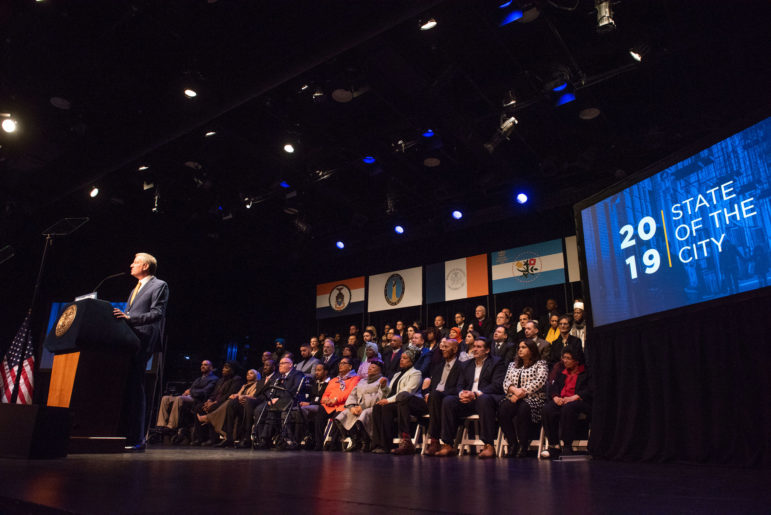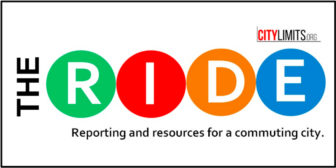
Michael Appleton/Mayoral Photography Office
Mayor Bill de Blasio delivers his sixth State of the City address at the Symphony Space in Manhattan.
Mayor Bill de Blasio delivered his annual State of the City speech Thursday, which included some big promises for the city’s commuters. He pledged to expand NYC Ferry service to three new neighborhoods—including the system’s first link to Staten Island—and undertake a number of initiatives to speed up the city’s sluggish bus network, like a new NYPD tow truck unit to haul away cars blocking bus lanes, according to the plan.
Speaking before a crowd at the Symphony Space, the mayor pledged to launch new ferry lines linking Staten Island to Manhattan’s west side and Coney Island to lower Manhattan. He also plans to expand the Soundview route—which launched in August to positive reviews from Bronx riders—to connect with Ferry Point on the borough’s east side.
The new Staten Island route will launch next year, running between St. George on the borough’s north shore to Battery Park City and West 39th Street in Manhattan, according to a tweet from the NYC Ferry’s Twitter account. The Coney Island route, which will make stops in Bay Ridge and at Wall Street’s Pier 11, will start running in 2021, the same year the Ferry Point landing will be added to the Soundview route.
In addition to more ferry service, de Blasio promised relief for the city’s frustrated bus riders, who’ve been subject to debilitatingly slow service, with the average city bus speed clocking in at 7.4 miles per hour, according to a comptroller report last year. The system has seen an exodus of bus riders in recent years, with ridership dropping 14 percent since 2007.
The mayor vowed to undertake efforts to speed up buses by 25 percent, or an average speed of 9.25 miles an hour, by the end of 2020. His bus initiatives will include installing bus lanes at a quicker rate, with 10 to 15 miles added per year, and bringing transit signal priority—which gives buses a green light first—to 300 new intersections a year, according to a spokesman. The city will also push for the MTA to reinstate the expansion of its Select Bus Service program, which was put on hold for the next few years as part of the agency’s cost-cutting measures.
In addition to street and traffic signal changes, the NYPD will launch seven new tow truck teams exclusively dedicated to policing the city’s bus lanes and keeping them clear of parked cars, according to de Blasio.
“Don’t park in the bus lane and you’re not going to have a problem,” he quipped.
The announcement comes after years of campaigning for better bus service by a number of the city’s transit advocates, who banded together in 2016 to launch the Bus Turnaround Coalition. Buses are particularly important for the city’s seniors and disabled residents, those advocates argue, since many can’t traverse the subway system since so a majority of subway stations still lack elevators.
“This exciting new plan gives me hope,” Deborah Baldwin, a member of the grassroots transit group Riders Alliance, said in a statement Thursday. “I’ve stood at the curb waiting for the bus far too long.”
The mayor also had a message in his State of the City speech for lawmakers in Albany, who will be tasked in the coming months to approve a budget that—ideally—includes new revenue sources for the cash-strapped MTA to upgrade the deteriorating subway system.
“Come heck or high water, we will get Albany to fix our subways because New Yorkers can’t waste more time getting where they need to go,” said de Blasio, who favors the idea of a Millionaire’s Tax to fund the subway fixes, but also said that proposals for congestion pricing, an idea to which the mayor was initially chilly, “have definitely improved” and noted that, “Other people have floated other ideas, like a new Transportation Bond Act, or using the proceeds from marijuana revenue to finally get the MTA to work.”
“Whatever the package of solutions, working people can’t wait,” he said. “We cannot let 2019 go by without a solution. We cannot wait another year.”








